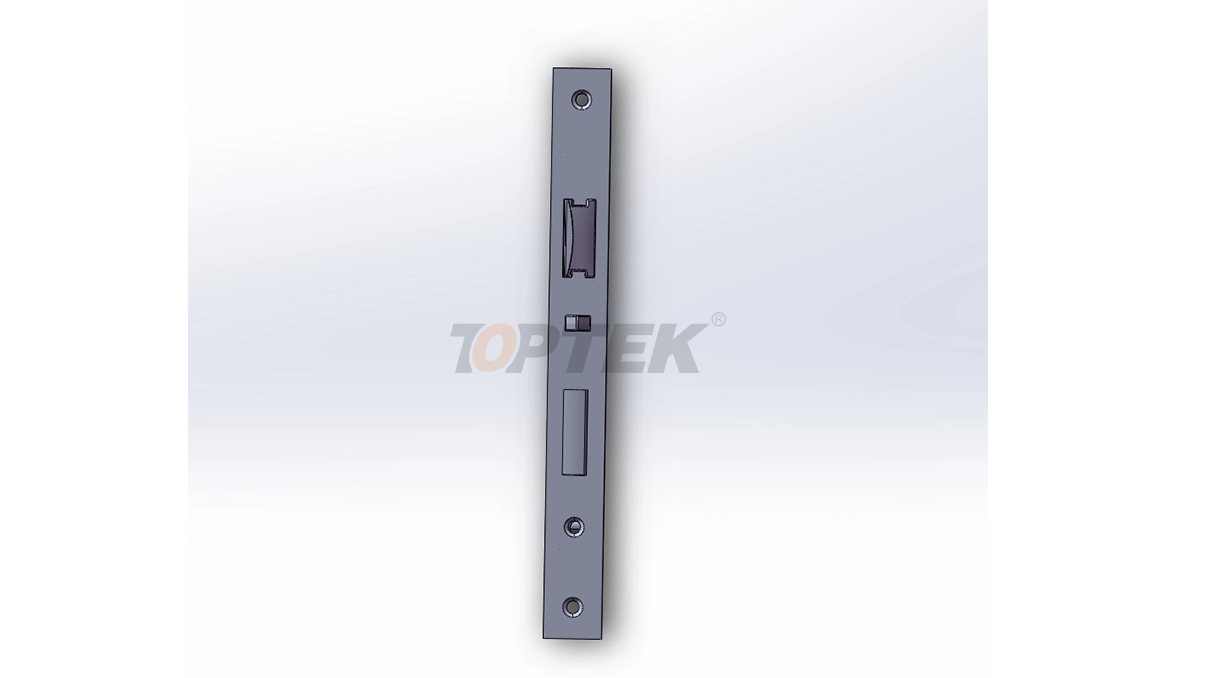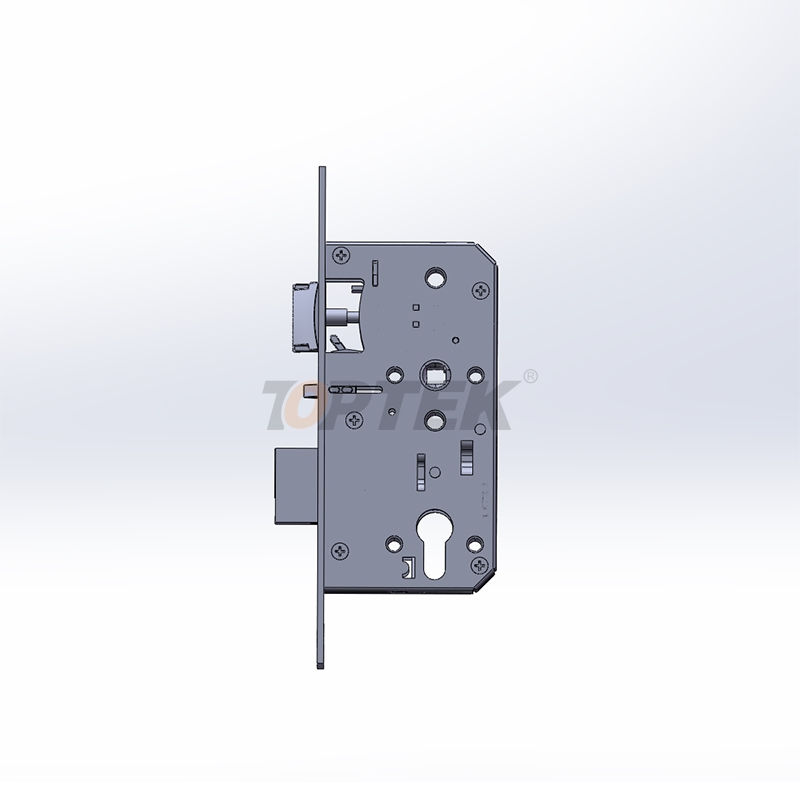When it comes to protecting buildings and their occupants, fire safety cannot be compromised. One crucial component of fire safety in buildings is the EN 1634 Fire rated door lock. This standard plays a significant role in ensuring that doors equipped with locks can effectively resist fire for a specified duration, providing critical time for evacuation or fire suppression.
If you’re navigating fire safety for your business, home, or construction project, this guide will explain what you need to know about EN 1634 fire resistance ratings and how to choose the right fire rated door lock.
What Is the EN 1634 Standard?
The EN 1634 is a European standard that measures the fire resistance of doors and door hardware, including locks, hinges, and other fittings. To be certified under this standard, a door lock must undergo rigorous testing to ensure it can withstand exposure to fire and high temperatures without compromising its functionality.
The standard assesses two primary performance criteria for fire resistance:
● Integrity (E): This measures whether the door can prevent the passage of flames and hot gases.
● Insulation (I): This evaluates how effectively the door reduces heat transfer to the unexposed side, ensuring the door remains cool to the touch.
When these criteria are met under specific conditions, the product is classified as suitable for use in fire-rated doors, ensuring robust protection during emergencies.

Why Are EN 1634 Fire Rated Door Locks Important?
1. Vital for Life Safety
A fire rated door lock ensures that fire-resistant doors stay closed and secure during a fire, slowing the spread of flames and giving occupants more time to evacuate safely.
2. Building Code Compliance
Many countries require that commercial and residential buildings meet fire safety regulations, which often include the installation of fire-rated doors and locks.
3. Protects Property and Assets
Beyond saving lives, EN 1634-certified locks help contain fires, preventing flames from reaching valuable assets or equipment in nearby rooms.
4. Maintains Lock Functionality Under Extreme Heat
Fire rated door locks are specifically designed to function even when exposed to high heat. This ensures that occupants can exit quickly if needed, and firefighters can gain access when responding to emergencies.
How Are Fire Rated Door Locks Tested Under EN 1634?
EN 1634 testing involves recreating real-life fire scenarios inside a controlled laboratory environment. Here are the key steps involved in testing a fire rated door lock:
● Temperature Exposure: The lock and accompanying door assembly are exposed to temperatures exceeding 1,800°F (approximately 1,000°C).
● Timing: The lock must prove its resilience for a specified duration (commonly 30, 60, or 120 minutes).
● Durability Assessment: The product’s ability to maintain its locking and closing function is evaluated post-exposure.
Locks that pass these tests are awarded fire resistance classifications, indicating their level of performance in a fire incident.
Key Features to Look for in Fire Rated Door Locks
When selecting a fire rated door lock, ensure it meets the following criteria to maximize safety and compliance:
1. EN 1634 Certification
Always check for official EN 1634 certification to guarantee that the product complies with recognized fire safety standards.
2. Material Durability
Fire rated locks are typically made with durable materials such as steel or other high-temperature-resistant alloys. These materials maintain structural integrity during fires.
3. Duration of Fire Resistance
Choose a lock rated for the appropriate fire resistance duration (e.g., 30, 60, or 120 minutes). Higher ratings are recommended for areas at greater risk.
4. Compatibility with Fire Doors
Ensure the lock is compatible with the fire-rated door it will be installed on. Health checks for features like latch throw and strike plate design are crucial.
5. Additional Security Features
Some fire rated locks also come with added security features such as anti-pick or anti-bump technology, combining fire protection with enhanced security.
Applications of Fire Rated Door Locks
Commercial Spaces
Office buildings, shopping centers, and warehouses often require fire-rated doors equipped with EN 1634 locks to meet regulatory compliance.
Residential Buildings
High-rise apartments, shared accommodations, and housing complexes benefit from these locks to provide better fire safety for occupants.
Healthcare and Education Facilities
Hospitals, nursing homes, and schools use fire rated door locks to ensure patient and student safety, even in the event of emergencies.
Hospitality Industry
Hotels and resorts rely on these locks for guestroom and corridor doors to mitigate fire risks while maintaining robust security.


Benefits of Using EN 1634 Fire Rated Door Locks
Apart from regulatory compliance and safety enhancement, EN 1634 locks offer several additional benefits, including:
● Peace of Mind: Knowing your premises meet fire safety standards provides confidence and reassurance.
● Reduced Fire Insurance Costs: Many insurers offer discounts to properties with proper fire-rated installations.
● Enhanced Building Value: Fire safety measures can increase the overall value of a property during sales or tenancy agreements.
Choosing the Right Fire Rated Door Locks for Your Needs
Step 1: Understand Your Building Requirements
Evaluate your property’s building codes and fire regulations. Identify which areas require fire-rated doors and locks.
Step 2: Consult an Expert
Speak to a fire safety specialist or supplier who can guide you in selecting the right lock based on your specific needs.
Step 3: Verify Certification
Always look for EN 1634 certification and ensure the product has been independently tested and approved.
Step 4: Invest in Quality
While lower-cost options may be tempting, investing in a high-quality fire rated lock ensures long-lasting performance and reliability.
Step 5: Periodic Maintenance
Ensure regular inspections of your fire-rated locks to confirm they remain functional and compliant.
Taking Fire Safety Seriously
Equipping your building with EN 1634 Fire rated door locks isn’t just about compliance; it’s about safeguarding lives and property. These locks are a crucial layer of defense against fires, giving occupants the time they need to evacuate safely.
Is your building fire safe? Don’t wait until it’s too late. Make the smart decision to install EN 1634 fire rated door locks today.
EN 1634 Fire rated door lock
Fire rated door lock
EN 1634 door lock
English
العربية
Français
Русский
Español
Português
Deutsch
italiano
日本語
한국어
Nederlands
Tiếng Việt
ไทย
Polski
Türkçe
አማርኛ
ພາສາລາວ
ភាសាខ្មែរ
Bahasa Melayu
ဗမာစာ
தமிழ்
Filipino
Bahasa Indonesia
magyar
Română
Čeština
Монгол
қазақ
Српски
हिन्दी
فارسی
Kiswahili
Slovenčina
Slovenščina
Norsk
Svenska
українська
Ελληνικά
Suomi
Հայերեն
עברית
Latine
Dansk
اردو
Shqip
বাংলা
Hrvatski
Afrikaans
Gaeilge
Eesti keel
Māori
සිංහල
नेपाली
Oʻzbekcha
latviešu
অসমীয়া
Aymara
Azərbaycan dili
Bamanankan
Euskara
Беларуская мова
भोजपुरी
Bosanski
Български
Català
Cebuano
Corsu
ދިވެހި
डोग्रिड ने दी
Esperanto
Eʋegbe
Frysk
Galego
ქართული
guarani
ગુજરાતી
Kreyòl ayisyen
Hausa
ʻŌlelo Hawaiʻi
Hmoob
íslenska
Igbo
Ilocano
Basa Jawa
ಕನ್ನಡ
Kinyarwanda
गोंगेन हें नांव
Krio we dɛn kɔl Krio
Kurdî
Kurdî
Кыргызча
Lingala
Lietuvių
Oluganda
Lëtzebuergesch
Македонски
मैथिली
Malagasy
മലയാളം
Malti
मराठी
ꯃꯦꯇꯥꯏ (ꯃꯅꯤꯄꯨꯔꯤ) ꯴.
Mizo tawng
Chichewa
ଓଡ଼ିଆ
Afaan Oromoo
پښتو
ਪੰਜਾਬੀ
Runasimi
Gagana Samoa
संस्कृत
Gaelo Albannach
Sepeti
Sesotho
chiShona
سنڌي
Soomaali
Basa Sunda
Wikang Tagalog
Тоҷикӣ
Татарча
తెలుగు
ትግንያውያን
Xitsonga
Türkmençe
संस्कृत
ئۇيغۇرچە
Cymraeg
isiXhosa
ייִדיש
Yorùbá
isiZulu








































